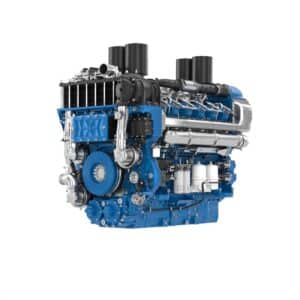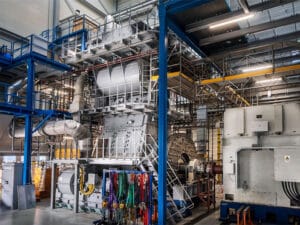
Wiernicki: LNG is “a fuel in transition”
Written by Nick Blenkey
Wiernicki: "The great potential of LNG to contribute to decarbonization objectives in the long-term is realized through bio-LNG and carbon capture."
ABS chairman, president and CEO Christopher J. Wiernicki made it clear that LNG will be a key fuel in the energy transition in a keynote speech at the 6th Liquefied Gas and Alternative Fuels Senior Executive Forum.
Held by the Coast Guard’s Liquefied Gas Carrier National Center of Expertise at Coast Guard Sector Houston-Galveston on January 19, the forum brought together Coast Guard personnel, other government agencies and industry experts to discuss the continued growth and use of liquefied gases and alternative fuels throughout the maritime community.
“We are going to have to begin to balance what we’re facing today, which is, essentially, how do we handle energy security relative to the short-term energy security challenge and the longer-term energy transition? LNG is going to play a leading role in this,” said Wiernicki. “However, for such a key fuel for the energy transition, it is important to recognize it is itself a fuel in transition. And we will need it to not only evolve but to address and mitigate the risks inherent in its operation today if we are to reach our 2050 objectives.”
Noting that an LNG vessel had a decade longer in its operational lifespan than an identical traditionally fueled vessel, Wiernicki said that methane slip represents a significant challenge and after-treatment technologies are still in development. However, the great potential of LNG to contribute to decarbonization objectives in the long-term is realized through bio-LNG and carbon capture.
“Another challenge LNG has to contend with is the carbon content at its core,” said Wiernicki. “Here too we can expect to see significant developments. Liquefied biomethane, or bio-LNG, a carbon neutral fuel produced from sustainable biomass resources, has the potential to meet a significant portion of future shipping energy demand. Not only can bio-LNG be used as a drop-in fuel in existing LNG-fueled engines but it can also be transported, stored and bunkered in ports using the existing LNG infrastructure.
“But this is just the beginning of LNG’s potential to further contribute to the energy transition. The feedstock of blue hydrogen is methane after steam reforming, when the CO2 produced in the process is captured. While we are scaling up global production of zero carbon green hydrogen, blue hydrogen and by extension LNG, will have a critical role in filling the gap.”




